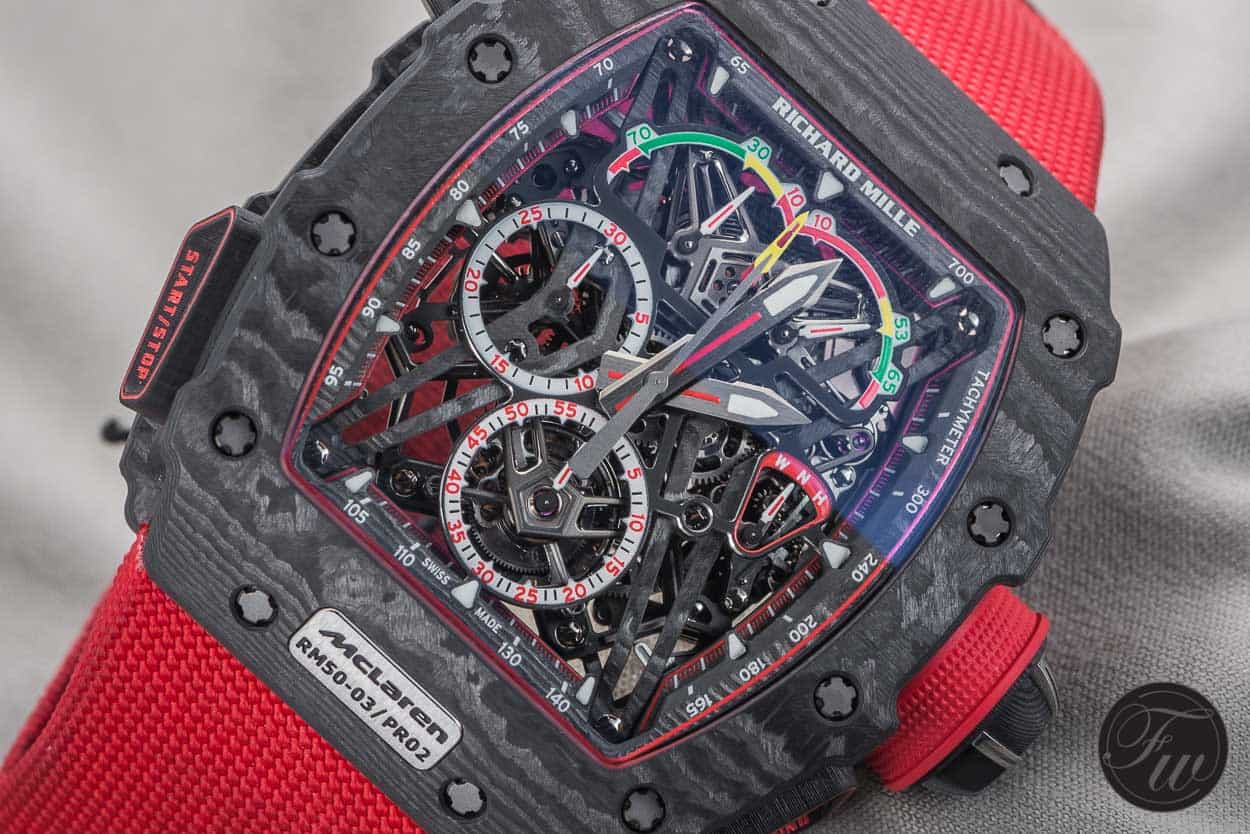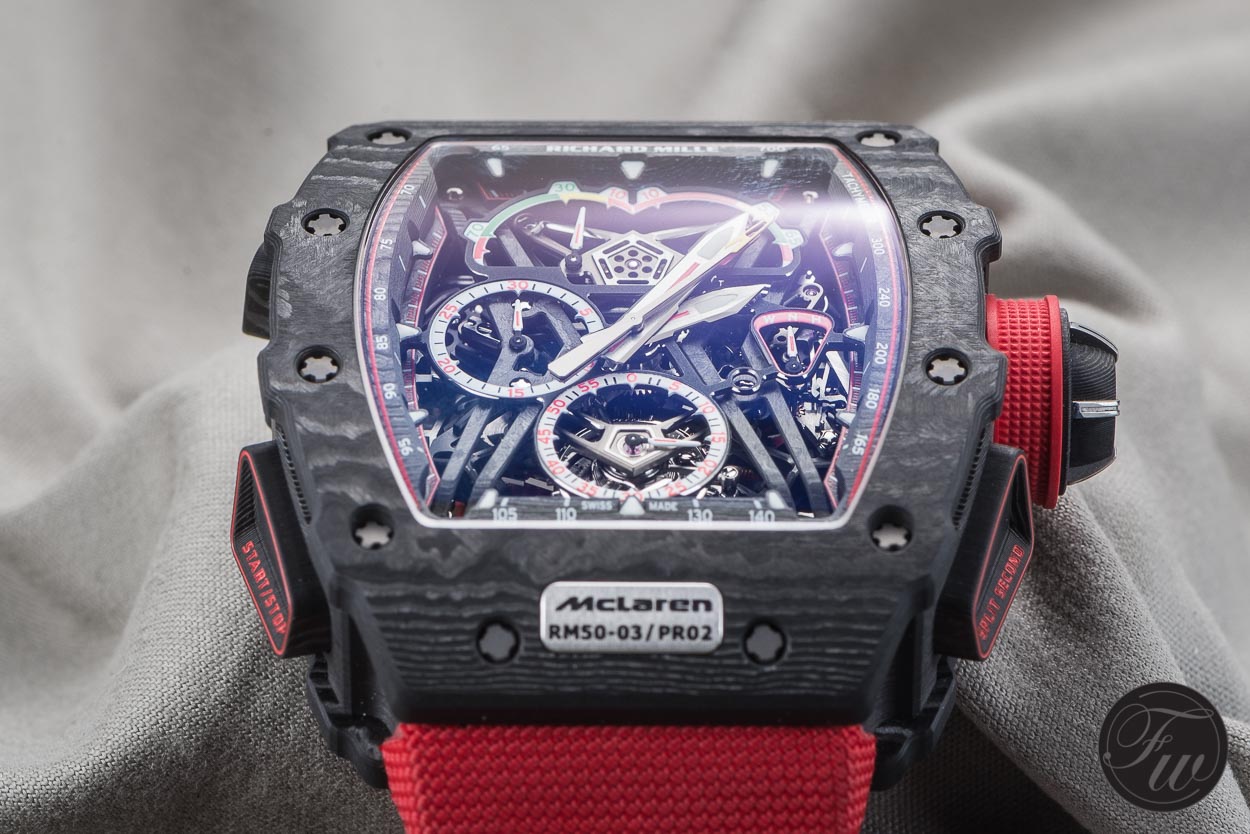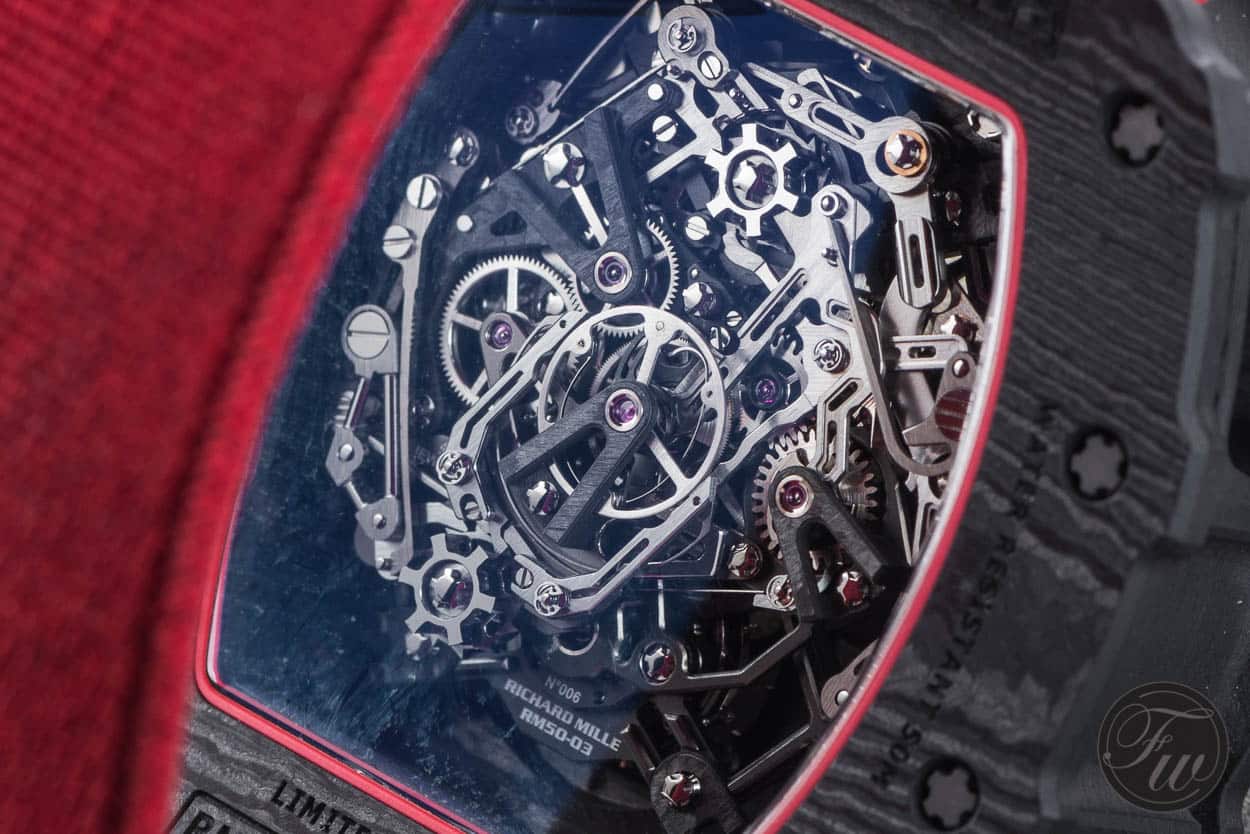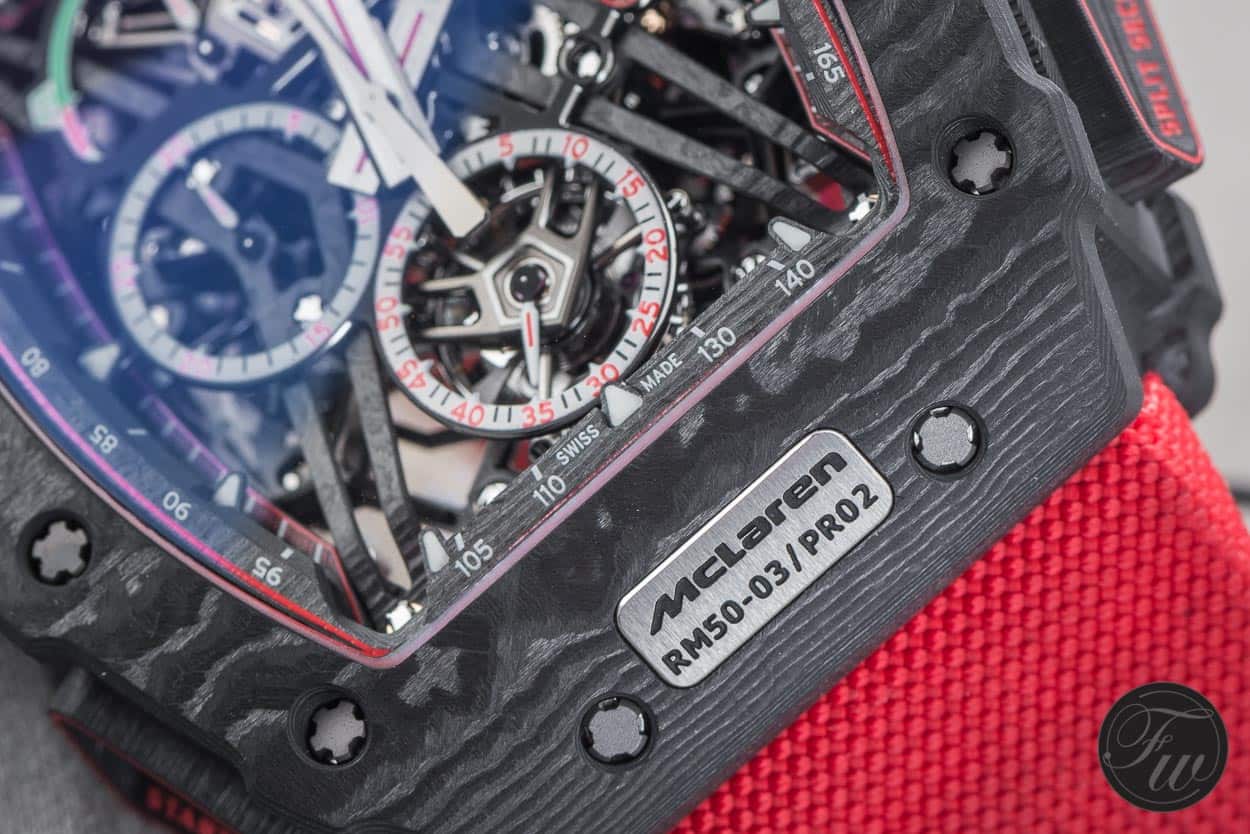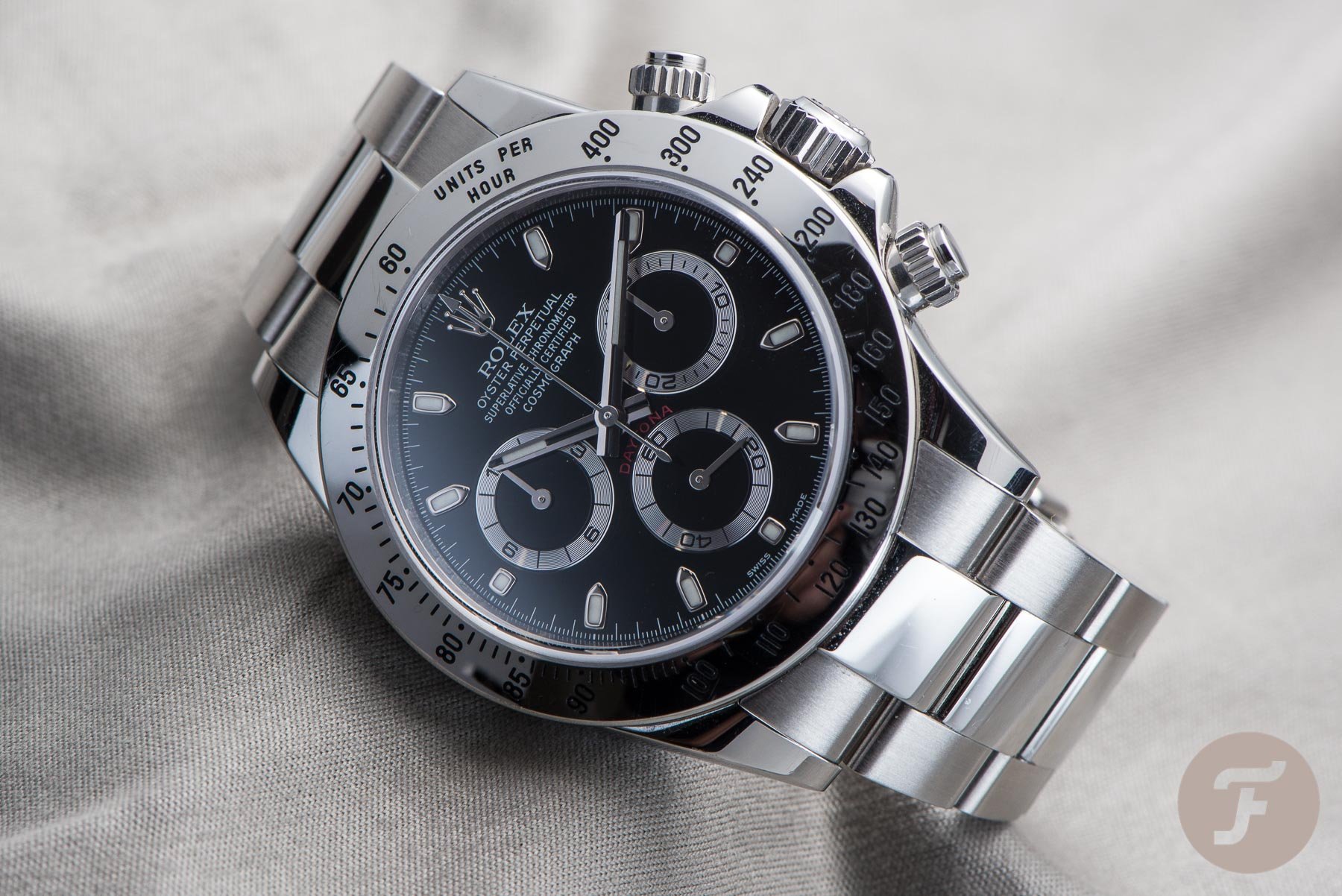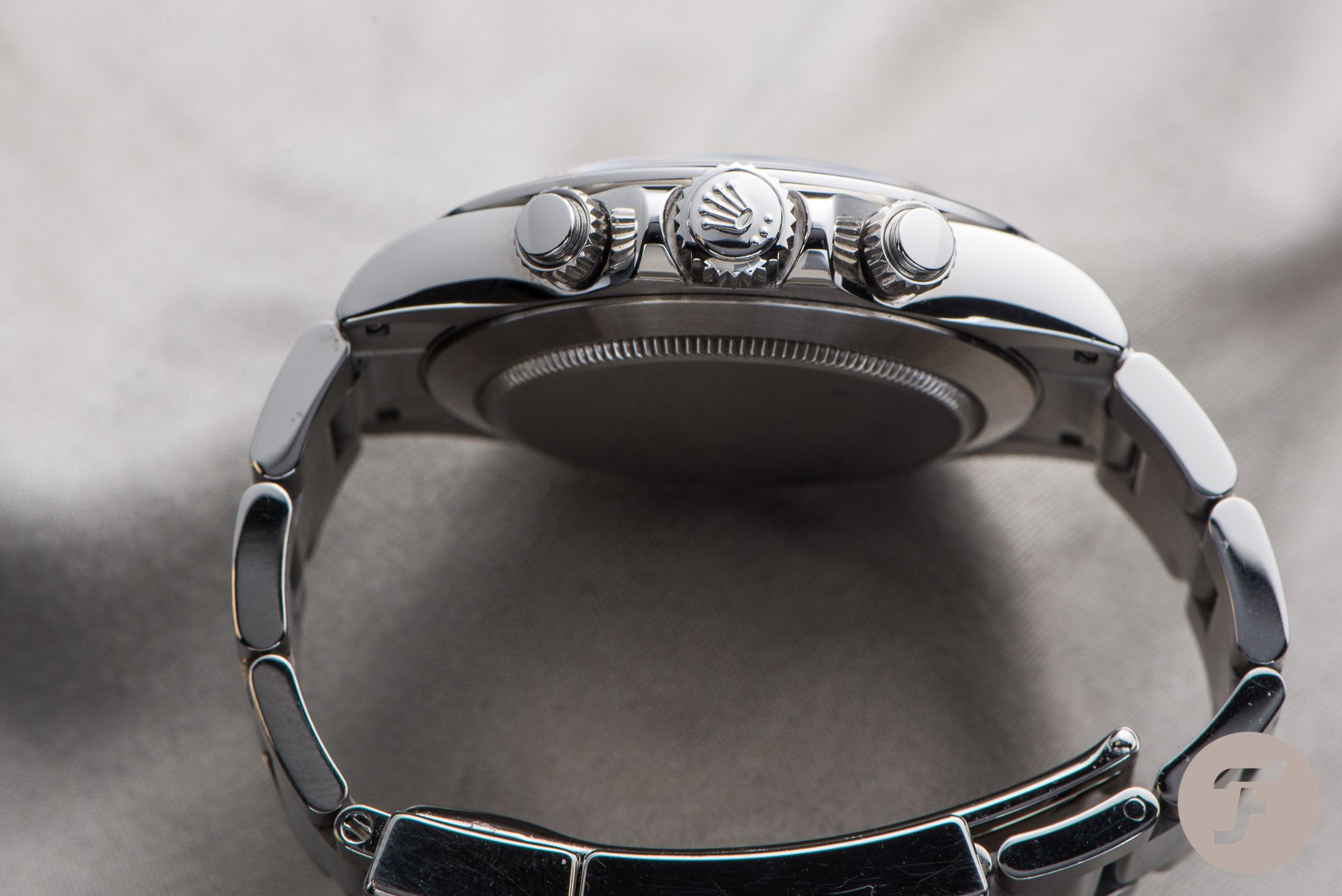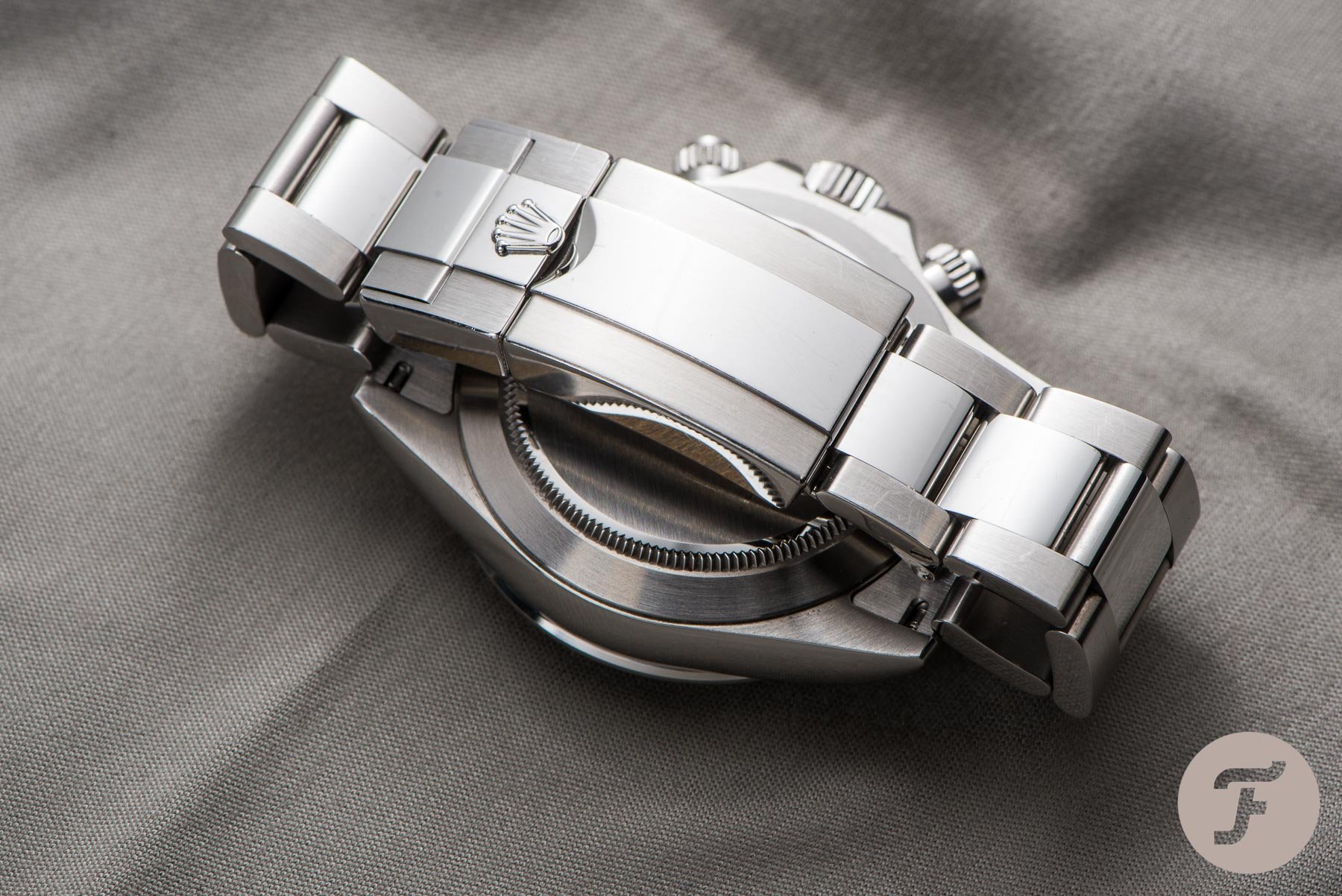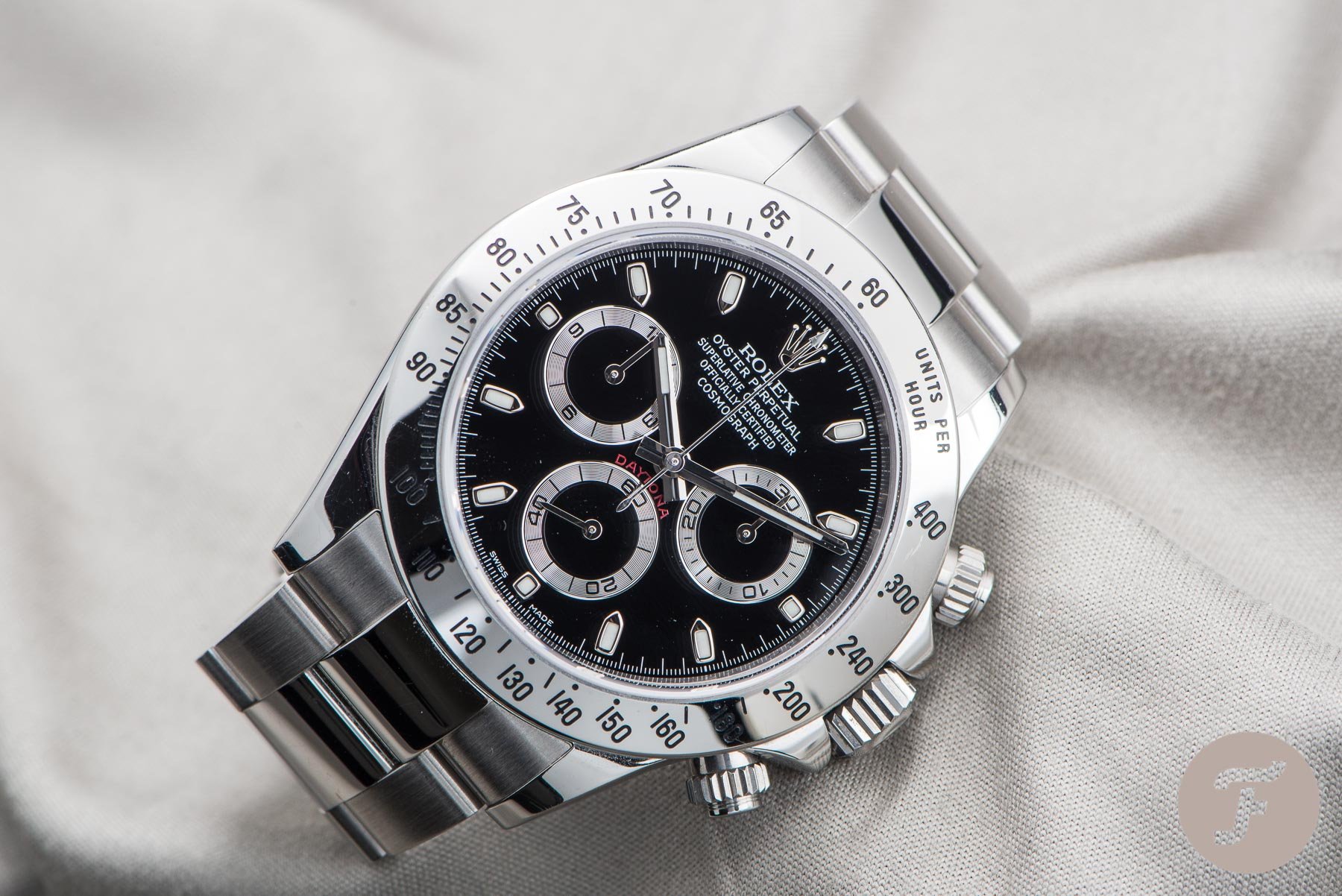The Fast And The Fratelli: Rolex Daytona 116520 Versus Richard Mille RM 50-03
Welcome to The Fast & The Fratelli. The goal? To find the best Racing Chronograph of the past ten years. The rules? Each editor selects two watches that must be able to track elapsed time for at least one minute. The watch choices also must feature a tachymeter scale, and the movement needs to be mechanical. And most of all, each watch must be thoroughly awesome. But we’ll leave that up to the Fratelli to decide.
First up is my super high-end chronograph pick, the Richard Mille RM 50-03 Manual Winding Tourbillon Split-Seconds Chronograph Ultra-Light McLaren F1. Unpacking that lengthy title is a task in itself, which I plan to tackle in reverse. However, for brevity, I will henceforth refer to it as the RM 50-03.
Richard Mille RM 50-03 Manual Winding Tourbillon Split-Seconds Chronograph Ultra-Light McLaren F1
The “McLaren F1” refers to Richard Mille’s partnership with the McLaren Formula One team. In fact, the RM 50-03 was the first Richard Mille since the collab began in 2016 to bear the McLaren logo beneath the 6 o’clock marker.
For the “Ultra-Light” portion, the RM 50-03 pioneers the use of Graphene. Graphene technology arranges carbon atoms in a way that is 200 times stronger than the strongest steel yet six times lighter. Like a diamond in its natural carbon-based form, Graphene’s structure is the basis of its rigidity. The discovery at the University of Manchester has led to many exciting potential future uses of Graphene in all forms of manufacturing.
Ultra-light material science
Not known to wait around, Richard Mille infuses Graphene with carbon TPT from suppliers NTPT (North Thin Ply Technology) to formulate Graph TPT™. With this composite, the tonneau construction of the RM 50-03 creates an ebony wood grain effect unique to each watch. The dial of the RM 50-03 is then skeletonized and features power reserve and torque sensor indications. The arrangement of these inner dials resembles air intake side pods of modern Grand Prix machines.
All this tech and spec allows Richard Mille to claim the RM 50-03 as the world’s lightest Tourbillon Split Seconds Chronograph at a mere 38 grams. This claim is likely uncontested, yet Richard Mille is proud of its “racing machine for the wrist.” Then again, if we’re talking Fast & Fratelli, the RM 50-03 defines the modern racing chronograph. And yes, within that fruit salad of a dial is the tachymeter on the outer rehaut.
The price of leading
This attention to detail leads me to what will probably keep the RM 50-03 from winning this race; the price. The RM 50-03 shares its Tourbillon Split Seconds Chronograph movement with 2016’s equally bonkers RM 50-02 ACJ. If you don’t remember, the RM 50-02 ACJ had a case inspired by the fuselage window of an Airbus private jet.
With a similarly lofty price tag of $980,000, both watches are extortionate. Nonetheless, reports suggest the extremely high buy-in to the Richard Mille fan club has been incredibly lucrative for the brand.
Richard Mille also partners with Scuderia Ferrari and several F1 drivers with individual contracts. The abundance of exposure demonstrates Richard Mille’s keen interest in the sport. However, there is one brand that trumps Richard Mille in sponsorship proliferation — the official timekeepers of Formula One, Rolex.
Rolex Cosmograph Daytona ref. 116520
What can we say about the Rolex Daytona that hasn’t already been said? In a way, it transcends the sport in which it made its name. Yet there’s no getting away from its racing credentials. The outer bezel may borrow the idea of the external tachymeter scale from the Omega Speedmaster. But the execution is thoroughly routed in the Daytona’s DNA. The reference I have chosen is ref. 116520, whose production spans from 2000 to 2016. But this particular black-dial model in the images stems from the latter part of its lifecycle, so it complies with the rules as a watch of the last ten years.
With the Oyster case and screw-down pushers, the Daytona is a tight and neat package. A bit like the hand-beaten bodies of ’60s grand touring sports cars. Also, like the cars of its heyday, the Daytona excludes extraneous elements. A two-seater may remove the passenger wing mirror; likewise, the Daytona features imbalanced lugs. The crown side lugs are slimmer to maximize the operation and performance of the screw-down pushers — curiously, only for the steel models.
Although, many point to the fact the screw-down pusher may inhibit the chronograph when timing at short notice. But unless you’re planning to crash the car in a body of water after a timed lap, you can leave the pushers unscrewed.
Blue-collar raw materials
Richard Mille may experiment with space-age materials, but this Daytona sticks with trusted, blue-collar steel. In 2016, the steel bezel got an update to Cerachrom. But what also changed was the orientation of the tachymetric scale. On the steel bezel, the numerals sit horizontally. With the Cerachrom, the digits are bolder and follow the curvature of the bezel. I was never a fan of this radial pattern, as it impacts the scale’s readability when on the wrist. Though I must admit, the polished steel bezel does lack legibility in bright sunshine.
Other than the bezel, the black dial version of the steel Daytona is the same as the newer Cerachrom model. The Daytona is a watch that has already refined its aesthetic over nearly sixty years of subtle iterations. It does beg the question of where the Rolex Daytona can go from here — at least in steel. Perhaps a 42mm case with blue Cerachrom is the next step. I’d also like to see a full panda and reverse panda dials in non-precious metals. But for now, the all-steel black dial Rolex Daytona is a classic timepiece with a racing pedigree.
Now the Fratelli decide
The exotic materials and cutting-edge technology used in the Richard Mille RM 50-03 pairs well with McLaren’s Grand Prix and production cars. McLaren and Richard Mille also share similar ideals with ultra-clinical and organized manufacturing environments. I see a difference with the Rolex Daytona because it is meant to be a wrist-worn stopwatch for drivers. With modern onboard digital readouts and tracking beacons, a stopwatch is no longer a functioning tool for today’s racer.
Richard Mille gets this and instead focuses its efforts on reflecting the car’s performance and agility with lightweight, shock-resistant, and anti-g-force timepieces. The Rolex Daytona and Richard Mille RM 50-03 are different ends of the watch spectrum. Yet both fulfill the duty of a racing chronograph. Now it’s up to you for which watch gets your vote.

